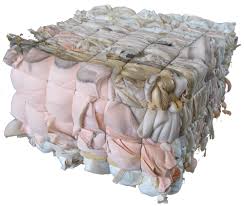Top Methods for Effectively Processing and Reusing PU Foam Scrap

1. Mechanical Recycling
Shredding and Grinding
Mechanical recycling involves physically processing PU foam scrap through shredding and grinding. This method breaks down the foam into smaller particles, which can then be used as a filler in new foam products, carpet underlay, or insulation materials.
Rebonding
Rebonding is a specific mechanical recycling process where shredded PU foam is bonded together using adhesives. This method produces a denser material that is often used in applications like carpet padding, gym mats, and cushioning products.
2. Chemical Recycling
Glycolysis
Glycolysis involves breaking down PU foam scrap using glycol, producing a liquid polyol that can be reused in the production of new polyurethane products. This method effectively closes the loop by converting waste foam back into a valuable raw material.
Hydrolysis
Hydrolysis uses water and heat to break down PU foam into its original components. This process generates polyols and amines, which can be used to produce new polyurethane foam, making it a highly sustainable recycling method.
3. Pyrolysis
Pyrolysis is a thermal decomposition process conducted in the absence of oxygen. It converts PU foam scrap into valuable by-products such as oil, gas, and char. These by-products can be used as energy sources or chemical feedstocks, contributing to a circular economy.
4. Repurposing
Acoustic Insulation
PU foam scrap can be repurposed as acoustic insulation material. Its sound-absorbing properties make it ideal for use in buildings, studios, and automotive applications.
Packaging Material
Shredded PU foam scrap can be used as packaging material to protect goods during shipping. This not only provides a sustainable use for waste foam but also reduces the need for new packaging materials.
5. Energy Recovery
When recycling is not feasible, energy recovery is an alternative method. PU foam scrap can be used as a fuel in waste-to-energy plants. This process involves incinerating the foam to generate energy, reducing landfill waste and providing an energy source.
6. Innovative Product Development
Composite Materials
PU foam scrap can be integrated into composite materials to enhance their properties. For instance, it can be mixed with other recycled materials to create durable, lightweight products for construction, automotive, and aerospace industries.
Sustainable Furniture
Recycled PU foam can be used to create sustainable furniture items such as cushions, mattresses, and upholstery. This method not only reduces waste but also promotes the use of eco-friendly materials in everyday products.
Conclusion
Effectively processing and reusing PU foam scrap requires a combination of innovative methods and sustainable practices. Mechanical recycling, chemical recycling, pyrolysis, repurposing, energy recovery, and innovative product development are all viable strategies that contribute to reducing environmental impact and promoting a circular economy. By implementing these methods, industries can not only manage their waste more effectively but also unlock new economic opportunities through the creation of sustainable products.
